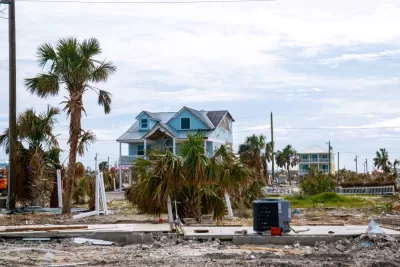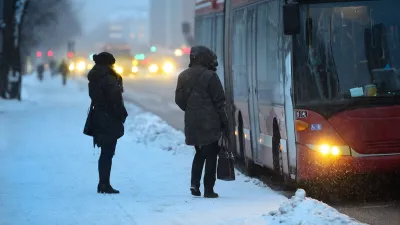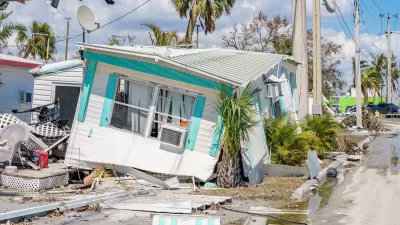With President Trump in Florida, Diane Yentel writes about the many people there still living without shelter after Hurricane Michael last year.

Diane Yentel, president and CEO of the National Low Income Housing Coalition, pens an opinion piece for the Orlando Sentinel to raise alarms about the lack of federal action in response to housing needs following Hurricane Michael, seven months ago.
"FEMA’s inexplicably and unacceptably slow response leaves thousands of low-income survivors continuing to sleep in tents, cars, doubled or tripled-up with other low-income families, or paying more than half of their incomes on rent, putting them at increased risk of evictions and homelessness," according to Yentel.
Among the distressing statistics shared by Yentel: Bay County, Florida reports that 5,000 children are now homeless as a result of the storm.
According to Yentel, the lack of response is a pattern evident in FEMA's response to Hurricane Harvey in Houston, Hurricane Florence, Hurricane Maria, and wildfires in California.
"After each disaster, FEMA consistently refused to provide critical housing solutions, like the Disaster Housing Assistance Program (DHAP), to help the most-vulnerable survivors get back on their feet," according to Yentel. "Instead, FEMA forced thousands of struggling families to live out of motel rooms through its Transitional Shelter Assistance (TSA) program. In doing so, the agency relied on a program that, by design, prevents many of the lowest-income people from receiving help altogether."
FULL STORY: Housing coalition chief: Trump has inept response to Panhandle crisis

Planetizen Federal Action Tracker
A weekly monitor of how Trump’s orders and actions are impacting planners and planning in America.

Map: Where Senate Republicans Want to Sell Your Public Lands
For public land advocates, the Senate Republicans’ proposal to sell millions of acres of public land in the West is “the biggest fight of their careers.”

Restaurant Patios Were a Pandemic Win — Why Were They so Hard to Keep?
Social distancing requirements and changes in travel patterns prompted cities to pilot new uses for street and sidewalk space. Then it got complicated.

Platform Pilsner: Vancouver Transit Agency Releases... a Beer?
TransLink will receive a portion of every sale of the four-pack.

Toronto Weighs Cheaper Transit, Parking Hikes for Major Events
Special event rates would take effect during large festivals, sports games and concerts to ‘discourage driving, manage congestion and free up space for transit.”

Berlin to Consider Car-Free Zone Larger Than Manhattan
The area bound by the 22-mile Ringbahn would still allow 12 uses of a private automobile per year per person, and several other exemptions.
Urban Design for Planners 1: Software Tools
This six-course series explores essential urban design concepts using open source software and equips planners with the tools they need to participate fully in the urban design process.
Planning for Universal Design
Learn the tools for implementing Universal Design in planning regulations.
Heyer Gruel & Associates PA
JM Goldson LLC
Custer County Colorado
City of Camden Redevelopment Agency
City of Astoria
Transportation Research & Education Center (TREC) at Portland State University
Camden Redevelopment Agency
City of Claremont
Municipality of Princeton (NJ)





























